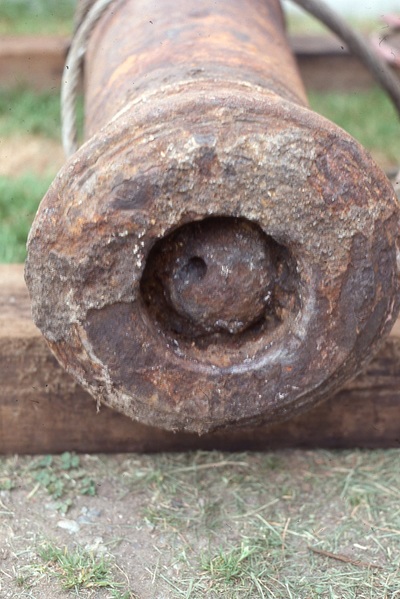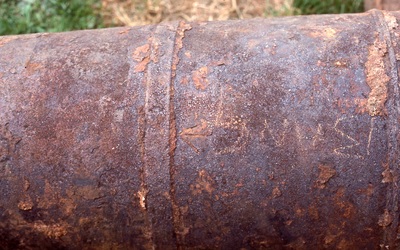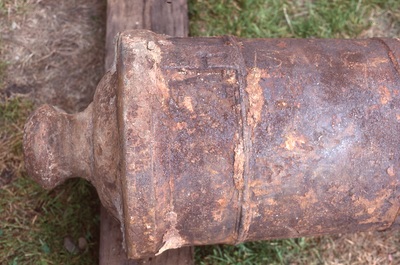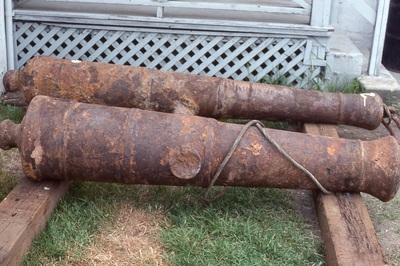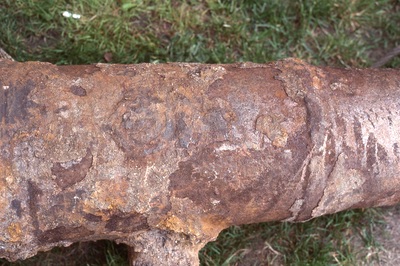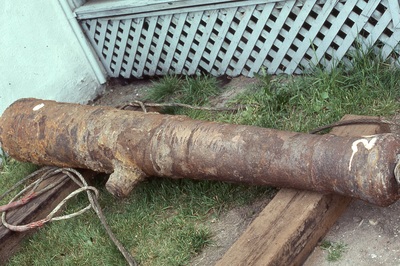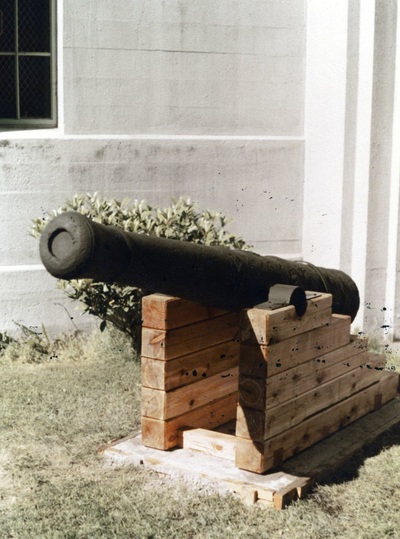Bessborough Armoury Cannons
In 1977, Major Ian Newby of 15th Field Regiment was visiting Woolwich, England when a number of old cannon barrels were uncovered during the excavation for a housing project on the site of an old ordnance factory. The London County Council offered the barrels to the Royal Artillery at Woolwich. Major Newby made a request for two of the barrels to be donated to the 15th Field Regiment and after a bit of paper work, the barrels were ours. Now the problem was how to get them to Vancouver. In his usual persuasive way he managed to have the Royal Corps of Transport move the barrels to the Royal Navy Fleet Auxiliary Ship Sir Galahad which was sailing from Marchwood to Vancouver with equipment for the British Army at CFB Suffield, Alberta. After arrival, one barrel was mounted at each entrance of Bessborough Armoury.
The next problem was to identify our new acquisitions. A plaque was placed on each mounting to identify the barrels but there has been some long standing doubt as to whether they were correctly identified. Several attempts over the years were made to solve the mystery but they only brought conflicting results. The barrels were badly corroded which made some of the critical markings difficult to interpret.
The cannons were not in pristine shape on arrival, however CFB Chilliwack stepped forward, cleaned them up and constructed a mounting system.
ln September 1998 after taking a number of photos and taking 19 careful measurements of each barrel the information was sent to Mr Charles Trollope, an expert in England. His findings are as follows:
West door barrel. A Bloomfield Iron 1 2-Pdr of 24 Cwt with a length of 6 feet for Land
Service and cast about 1810. It was one of many bored out to the 24-Pdr calibre of 5.823 inches in
about 1840 for use as flanking guns on Martello Towers. The cypher is that of George III. General Sir
Thomas Bloomfield was Inspector of Ordnance from 1779 to 1822 and the main designer of guns during
that period.
East door barrel. This is a 6-pdr of 7 feet 6 inches weighing about 19 Cwt. The cypher is that
of the Rose and Crown. The date period is 1703- 1707 and was probably cast by Maximillian Western
Sussex.
The next problem was to identify our new acquisitions. A plaque was placed on each mounting to identify the barrels but there has been some long standing doubt as to whether they were correctly identified. Several attempts over the years were made to solve the mystery but they only brought conflicting results. The barrels were badly corroded which made some of the critical markings difficult to interpret.
The cannons were not in pristine shape on arrival, however CFB Chilliwack stepped forward, cleaned them up and constructed a mounting system.
ln September 1998 after taking a number of photos and taking 19 careful measurements of each barrel the information was sent to Mr Charles Trollope, an expert in England. His findings are as follows:
West door barrel. A Bloomfield Iron 1 2-Pdr of 24 Cwt with a length of 6 feet for Land
Service and cast about 1810. It was one of many bored out to the 24-Pdr calibre of 5.823 inches in
about 1840 for use as flanking guns on Martello Towers. The cypher is that of George III. General Sir
Thomas Bloomfield was Inspector of Ordnance from 1779 to 1822 and the main designer of guns during
that period.
East door barrel. This is a 6-pdr of 7 feet 6 inches weighing about 19 Cwt. The cypher is that
of the Rose and Crown. The date period is 1703- 1707 and was probably cast by Maximillian Western
Sussex.

